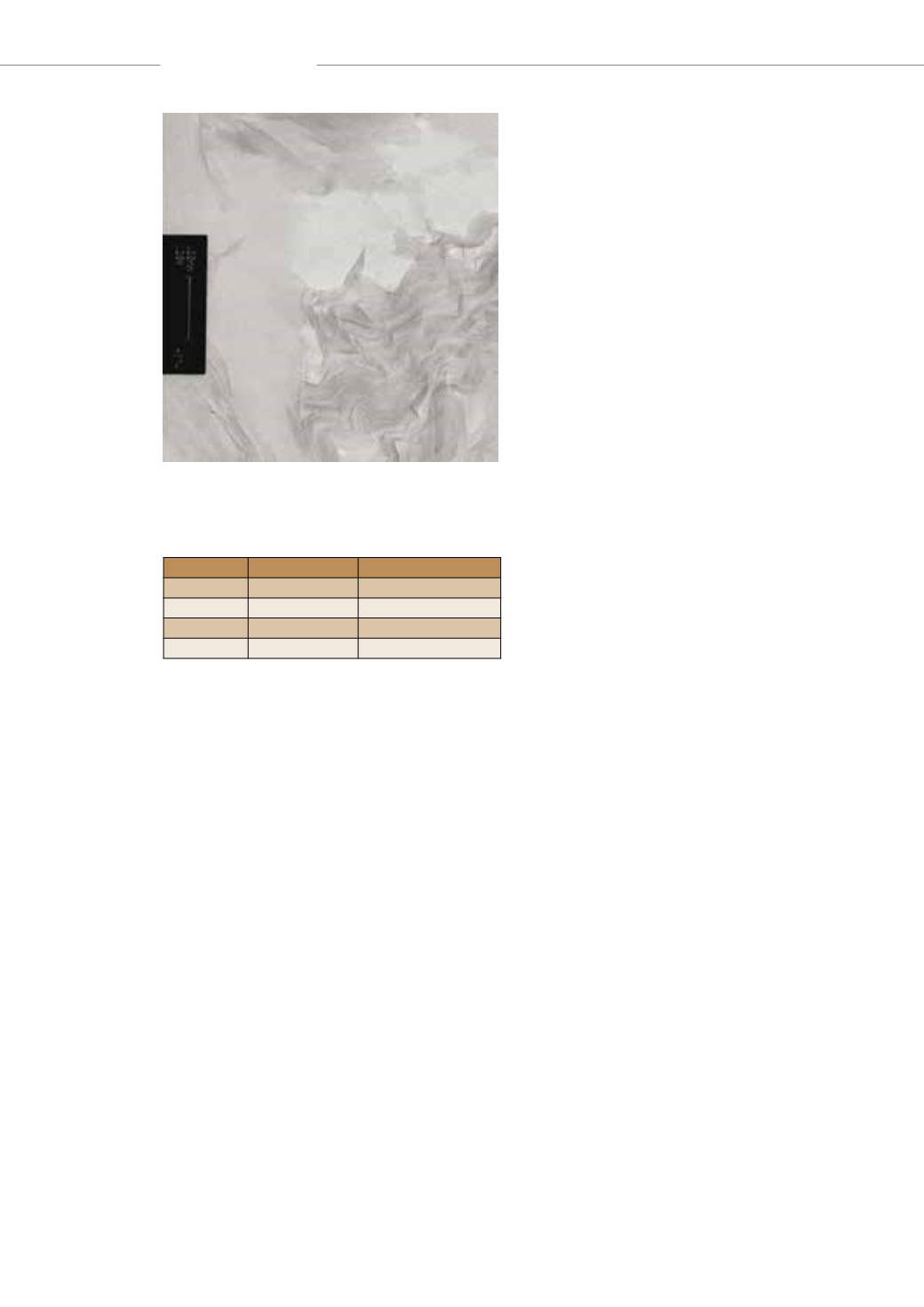

The emergence of commercial NCs (montmorillonite
type) has opened up new avenues for anti-corrosion and
fire retardant paints due to the high barrier to oxygen
and humidity that NCs can impart to conventional paint
formulations.
In this study, the effectiveness of NCs as barrier ele-
ments to corrosion agents (oxygen and humidity) and the
effect of NCs surface treatment on the barrier properties
were investigated to obtain anti-corrosion and flame retar-
dant paints. The objective was to evaluate the effectiveness
of NCs as barrier elements to corrosion agents (oxygen,
humidity) in epoxy paints and to study the effect of NC
concentration on the barrier properties of epoxy paint sys-
tems. The paints containing NCs were evaluated as primers
and intermediate layers for steel elements, and compared
with epoxy paints of the same composition but without the
compatibilised NCs.
Experimental
Proper exfoliation and orientation of the nanoclay platelets
is expected to reduce permeability in the paint system.
Reduction of permeability is attributed to the tortuous path
available for diffusion of gases (oxygen) and liquids (water).
Reducing permeability can inhibit the corrosion of metal
structures. The study was composed of two parts. In the first
part, the NCs were incorporated into neat epoxy systems.
In the second part, the NCs were compounded into primer
and intermediate epoxy paint formulations. The same basic
epoxy resin and curing agent were used in the two stages.
The epoxy resin used was based on diglycidyl ether of
bisphenol A (DGEBPA) and a curing agent based on poly-
amidoamine. Two different NCs were used, one hydrophobic
and one hydrophilic. Two novel NCs were also prepared
from pristine NCs. The first was prepared by intercalation in
non-organic solvent (Nano 1) and the second by an organic
solvent (Nano 2). Compounding the dry NCs into epoxy or
paint was by intensive mixing (0,5–9% by weight). Vacuum
was applied to remove volatiles. Then the curing agent was
added and mixed in using a ratio of 1 part curing agent to 4
parts epoxy. The paints were applied using a doctor blade
apparatus. For oxygen permeability tests the paint samples
were 180 to 250 microns thick and for water permeability
tests the samples were 700 to 800 microns thick. The
oxygen barrier of the nanocomposite paints was evaluated
according to ASTM D 3985 at 25
o
C, 0% relative humidity
and 1 atmosphere of oxygen. The humidity barrier was
tested according to ASTM E 96, at 38
o
C and 90% relative
humidity. Compounding of the dry NCs into epoxy or paint
was by intensive mixing (1–5% by weight). The paint was
applied by brush. The epoxy resin NCs morphology was
followed by (TEM) Transmission Electron Microscopy. Salt
spray testing (700 to 2 000 hrs) was performed according to
ASTM B-117 using 10 x 10 cm steel specimens coated with
various paints formulations. Blister formation was followed
by visual inspection. Electrical impedance measurements
were taken following salt spraying. Finally, the wet adhesion
was measured following 1 000 hrs in an aqueous solution
of both alkaline and acidic conditions.
Surface treatment key for greatest
barrier properties
The reduced permeation of oxygen and humidity through
the paint layer is expected to result in corrosion inhibition
of metallic structures. In the case of the nanoclay platelets
having a high aspect ratio (500 to 1 000), the reduction in
permeability is due to the tortuous path for gas diffusion
(oxygen and humidity). To achieve the highest barrier prop-
erties, the condensed NC structure should be exfoliated to
the highest possible level (single platelets) and the single
platelets homogeneously dispersed parallel to the surface.
Consequently, the current study focused on the effect of
nanoclay surface treatment with respect to the epoxy paint
system, on the permeability to oxygen and humidity.
Hydrophilic nanoclay increases oxygen
and humidity barrier
In stage 1, neat epoxy/NCs were studied with respect to
the effect of NCs having various treatments for the NCs at
different NC concentrations.
Table 1 on page 5 summarises the oxygen permeability
of various epoxy/NC combinations.
As can be seen in Table 1, the best results were obtained
with the hydrophilic NC treatments (Nanto1 and 30B). In the
case of 3% NCs in Nanto1 a 5-fold reduction in oxygen per-
meability was achieved. The hydrophobic surface treatment
(25A) exhibited the worst barrier performance, as it was in-
compatible with the epoxy system. The effectiveness of the
Nanto 1 treatment compared with the commercial organo-
ammonium ion treatment was confirmed by Transmission
Electron Microscopy (TEM). TEMmicrographs indicated that
Composition
Thickness (Microns)
Water permeability g/m²/day
Epoxy – 0% Nantol
700
1.727
Epoxy – 1% Nantol
800
0.244
Epoxy – 3% Nanto
800
0.127
Epoxy – 5% Nantol
800
0.199
Table 2: Water permeability of epoxy/nanoclay coatings
6
Chemical Technology • August 2016
CORROSION AND COATINGS
Figure 2: TEM micrograph of “Cloisite 25A” NCs at 5% concen-
tration (bar size – 20 nm).
















